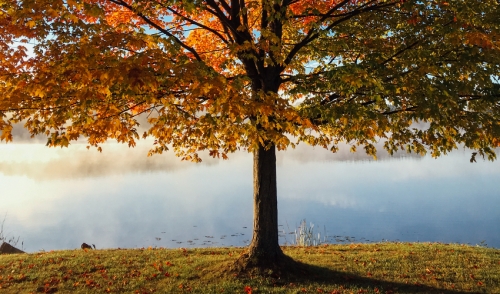
Problem Solving: Shade
Grass grows best in sunny areas, but some varieties also grow in partial shade. No grass will grow in complete shade, however. To survive, most grasses need at least four hours of sunlight daily, or all-day filtered sun, during the growing season.
The following points are recommended to get the best results from lawns that grow in partial or fairly dense shade:
Prune and Trim
In moderate shade, you can increase light penetration by thinning out overhead tree branches. Also trim overgrown shrubs along the border of the lawn.
Mow Higher
Raise mower height to mow 1/2 to 3/4 inch taller than elsewhere – definitely no less than 2 inches tall. The added leaf surface helps grass plants capture extra sunlight.
Extra Food and Water
If the shade is caused by trees, regular feedings and regular watering are important to overcome the competition of tree roots. Five feedings per year are recommended in such areas. The late fall and early spring feedings are especially important in these areas to get grass growing while the leaves are off the trees and shade is at a minimum.
Seed with Shade-Tolerant Grasses
Shady areas may require re-seeding periodically, spring or fall, to replace grass lost during the growing season. When seeding, select a brand of grass seed that has been blended to perform well in shade, such as Scotts Shady Grass Seed Mixture.
Among grasses that are used in warm-climate areas, the most shade-tolerant are tall fescue, St. Augustine, and zoysia. Bermudagrass is the poorest performer in shade.
Use shade-loving ground covers
In cases of dense shade where grass will not grow, it is recommended to use ground covers, such as ivy or pachysandra, instead of grass. Or the shaded area can be mulched and used to grow shade-loving plants such as hostas.
Information and images courtesy of Scotts lawn care.

